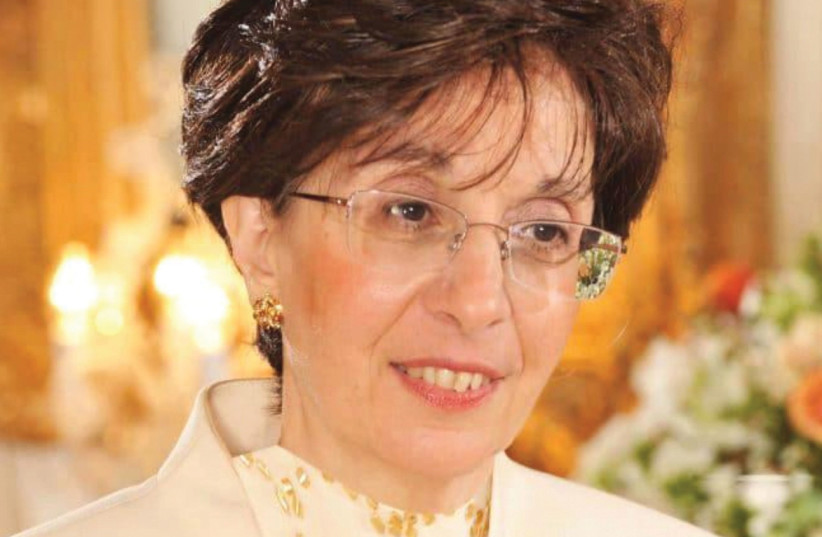As the Hamas massacre and kidnappings that led to the outbreak of war with Gaza have ignited levels of antisemitism around the world not seen in decades, several films at the Jerusalem Jewish Film Week, which runs until December 14 at the Jerusalem Cinematheque, attempt to illuminate antisemitism throughout history and may help people better understand its current incarnation.
Younger people trying to fathom how we got here may be the perfect audience for the animated documentary, The Conspiracy, by Maxim Pozdorovkin. It goes back several hundred years to examine the complex history of the German Warburg banking family; the Ukrainian Bronsteins, a family whose most famous member was known as Leon Trotsky; and the Dreyfus family of France.
Pozdorovkin shows how antisemitism against members of these families took a toll and how this prejudice was taken up by a sophisticated network of wealthy, media-savvy antisemites – the best known of whom was Henry Ford – who used their fame and influence to stir up hatred of Jews. The film, narrated by Mayim Bialik and which includes Liev Schreiber, Lake Bell, and Jason Alexander as voice actors, cleverly shows how this legacy of hatred has spread through the Internet and now influences a younger generation.
How Jews fought against the Nazis in the Holocaust
Resistance – They Fought Back, directed by Kirk Wolfinger and Paula S. Apsell, is an inspiring look at the ways, both major and minor, that Jews were able to fight back against the Nazi death machine during the Holocaust, dispelling the perception that the Jews went to their deaths, “like sheep to the slaughter.” But perhaps the most important part of the film lies in how it takes care to define resistance in a more inclusive way than usual.
It starts by telling stories of resistance in the Jewish ghettos (including the Warsaw Ghetto uprising) and it emphasizes that a key goal of the Nazis’ actions was to dehumanize and demoralize Jews, in order to make it easier to wipe them out. Any way that Jews in the ghettos could enrich their lives, culturally and socially, could be seen as a form of resistance, several historians argue. Organizing schools, concerts, plays, publications, etc. that brought enjoyment to the ghetto residents was a form of resistance, by this logic. So was the desire to record the stories of Polish Jewry, written by such leaders as Emanuel Ringelblum, of Oneg Shabbat Archive of the Warsaw Ghetto, and was hidden and discovered after the war. The movie quotes 19-year-old David Graber saying, “What we couldn’t scream out to the world, we buried in the ground.” The Paper Brigade in the Vilna Ghetto did the same, and following the war, these chronicles told the stories that almost no one survived to tell.

Following the mass deportations from the ghettos, the documentary shifts to the Jewish partisans in the forests of Europe, focusing on two main groups. One, which carried out attacks on Nazis was led by, among others, poet Abba Kovner, who exposed the Ponari Forest massacre even before the liquidation of the Vilna Ghetto and who urged resistance. Another group was led by the Bielski brothers in the forest of Belarus, who took in not only young people fit to fight but also children, the elderly, and women, and by the war’s end, it had managed to save over 1200 Jews.
The uprisings at Nazi concentration camps and death camps are also detailed in the film, which features rare photos of them. It also reveals how some members of the Sonderkommando units, who were tasked with disposing of the bodies of the Jews killed in the gas chambers at the death camps, were able to leave journals telling the stories of what they were forced to do. One such journal lay forgotten in a buried thermos until it was discovered in 1980.
The details of the ghetto resistance, the partisans’ fights, and the secret records kept by camp inmates create a mesmerizing tapestry of the vitality of the spirits of those who had faith that someday the world would learn the details of the Nazis’ crimes and would condemn them.
Francois Margolin’s Sarah Halimi: An Anti-Semitic and Unpunished Crime, tells a much more recent story of a horrifying incident of anti-Jewish violence in France. Sarah Halimi was murdered by her Mali-born neighbor during the French presidential campaign of 2017, who yelled “Allahu Akbar” while committing the murder. At first, the media ignored the case, but several persistent journalists were able to put it on the public agenda. Initially, the judge saw the case as a murder committed by a “madman” in the grip of psychosis, but French Jews saw this case as emblematic of the rise of antisemitism in contemporary France. There is still a campaign to get this murder labeled as an act of antisemitism.
While these movies all look at different times and places, their theme is the same: Jews must never stop fighting back against antisemitism.
